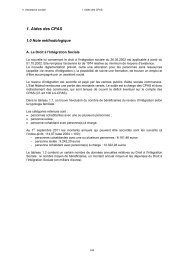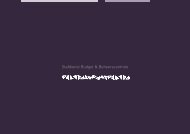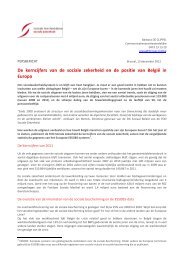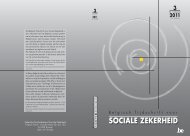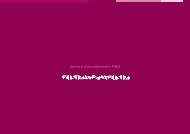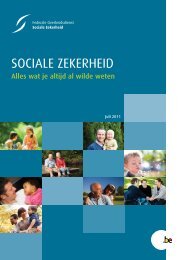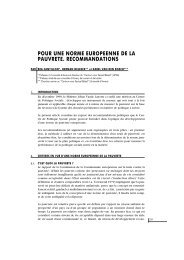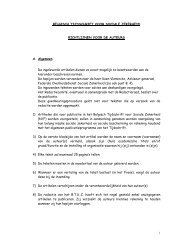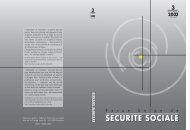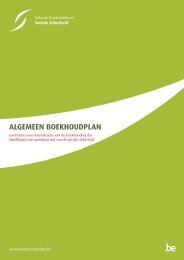social security - FOD Sociale Zekerheid
social security - FOD Sociale Zekerheid
social security - FOD Sociale Zekerheid
- No tags were found...
Create successful ePaper yourself
Turn your PDF publications into a flip-book with our unique Google optimized e-Paper software.
A.2. Self-employed womenSelf-employed women and helping women are entitled to an uninterrupted maternity leave ofmaximum 8 weeks (9 weeks in case of a multiple birth). It is not obligatory to take all the weeks.Since 1 January 2009, only three weeks must be taken, i.e. one week before giving birth andtwo weeks after. As far as the optional five weeks (or six weeks in case of a multiple birth) areconcerned, the mother can take them whenever she wishes starting from three weeks before thepresumed date of giving birth till 23 weeks after giving birth. Moreover, since 1 January 2010, theperiod of maternity leave can be extended when the newly born child must remain hospitalisedlonger than 7 days after birth. In such case, the period maternity leave is extended with durationequal to the number of full weeks the child remains hospitalised after these first seven days.However, the duration of the extension can never exceed 24 week. This extension starts on theday that follows the two weeks of obligatory postnatal maternity leave.The period of optional postnatal maternity leave then starts on the first day that follows the endof the period of extension.These leave weeks have to be taken in periods of seven consecutive calendar days. During thatperiod the self-employed woman is entitled to a lump-sum amount of 390.88 EUR per week(amount on 1 July 2011).A.3. Civil servantsJust like female workers in the private sector, female federal civil servants are entitled to 15weeks of maternity leave (19 weeks in case of a multiple birth). In this period, they continue toreceive 100% of their salary.The last two weeks of the postnatal maternity leave can, upon request of the female civil servant,be changed into postnatal rest days, when she can extend the work interruption after the ninthweek with at least two weeks.The maternity leave may be extended when the child is hospitalised within the period of sevendays after its birth. In such case, the maternity leave will be extended with the number of fullweeks the child remains hospitalised after these first seven days. However, the maternity leavecannot be extended for more than twenty-four weeks.In case of decease or hospitalisation of the mother, the father can take up the remaining part ofthe mother's maternity leave.B. Paternity leaveOn the occasion of the birth of his child, each employee has the right to be absent from work for10 days. These 10 days have to be taken up within four months after the birth and they can betaken up in one or in several periods.The employee receives his normal salary during the first three days of his absence. The next sevendays he has the right to a paternity fee. The amount of this fee is fixed at 82 % of the lost salary.However, this wage is limited to a maximum amount.The employee concerned has to file an application with the mutual insurance fund and theretohas to produce an excerpt form the birth certificate. The employee receives an information leafleton the allowances of his mutual insurance fund.Federal civil servants also have the right to ten days of paternity leave (leave for circumstances)when the spouse or the person the civil servant cohabits with has given birth to a child. Thesedays of paternity leave are entirely paid by the employer.53



